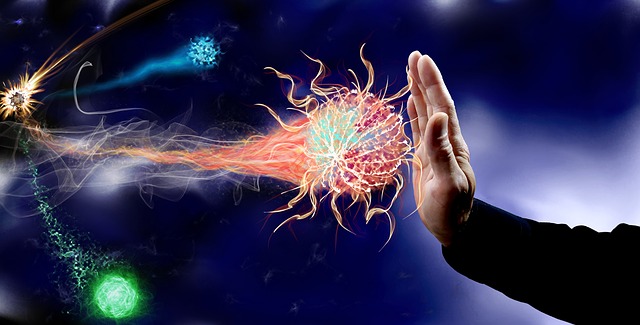Some People Are Immune to the HIV!
I was discussing with a friend when he said something which I find to be mostly right in a lot of circumstances: "Money is like HIV, a lot of people have it, but many that do never owns up to it."
The stigma associated with HIV is an issue that is very prominent in Nigeria.
The HIV epidemic officially recognised on June 5th, 1981, is an epidemic that leaves every researcher working long hours in the lab looking for a cure ever since.
HIV stands for Human Immunodeficiency Virus which is a virus that affects the human's immune system and renders it deficient to fight any disease or infection.
Unlike other viruses, once you are positive (infected), there is no way to reverse it.
Similar to other viruses, the HIV needs living cells to reproduce. The immune system cells are called the CD4 or T cells.
The virus hijacks the CD4 cells and forces it to create in thousands of copies of the virus. By infecting the CD4 cells, its ability to function as a body's "bodyguard" ceases, and it dies rather rapidly.
The continual death of the immune defence system leaves the body vulnerable to any infection that happens to come by.
Some people have all the luck
The mantra I grew up hearing was that since there is no vaccine for HIV, so no one is safe is from getting infected. But that was not entirely true.

[image Credit]: Pixabay]
It is worthy to note that up till date that the HIV vaccine has remained a challenging target.
The acquired immunodeficiency syndrome (AIDS), is when the immune system fails due to HIV infection, that opens the doors to opportunistic infections and other life-threatening infection such as cancer to spread.
There is virtually no recovery from HIV, except maybe from one of the most studied cases of the HIV epidemic recoverer, the "Berlin patient", whose real name is Timothy Ray Brown. The American man who resides in Berlin was diagnosed with HIV in 1995. He controlled the infection through the use of the antiretroviral drug (ART) for 11 years. He later developed leukaemia, the doctors did unsuccessful chemotherapy and had to proceed to bone marrow transplant. After the operation, the doctors noticed his HIV levels in his blood had dropped to an undetected level even after he stopped taking ART.
Even the most sophisticated labs in the world was unable to find traces of the HIV four years after the transplant.
There are theories that scientists think may be responsible for his rare recovery.
The factors are:
The bone marrow donor possesses a rare mutation that alters one of the receptors that HIV uses to invade the white blood cells.
The chemotherapy may likely have destroyed his immune system together with the HIV infected cells.
The newly transplanted cells attack Brown's cells through a process known as graft versus host disease (GvHD) where graft (donated tissue) sees the host (recipient) as a foreign object, may have killed off any remaining HIV cells.
The first factor brings us to the topic of today. While reading some articles recently, I came across the post which states that up to 10% of Europeans are resistant to HIV.
HIV Resistance in Europe
The Lucky Genes
In the light of the AIDS epidemic, some lucky few had consistently proven to be resistant to the HIV. This resistance is of much interest to the science community because if the scientist could decipher how these people can resist HIV, they are steps nearer to finding how to cure it in other non-resistant individuals.
The researchers in that quest realised that the immunity to this HIV is something that could be traced back to illnesses suffered and survived centuries ago, the ethnic background and, of course, the mutated genes of the people.
An estimated 1% of Nothern Europeans descendants with Swedes leading the group are resistant (immune) to HIV infection. Now I wish I am the lucky 1% Swedes. The people inherited mutated genes known as CCR5-Delta 32.

[CCR5 receptor (yellow) in cell membrane (grey, modeled) By Thomas Splettstoesser [CC BY-SA 3.0]: Wikipedia Commons]
The CCR5-Delta 32 mutation resists the HIV's ability to pass into immune cells. It does this by making the CCR5 co-receptor, which acts as a door through which HIV enters the cell, to develop smaller than usual and also not be outside the cell.
When the CCR5 is no longer sitting outside of the cells, most forms of HIV cells can no longer gain entrance and infect the cells. If you are amongst the lucky few and you have two copies of the genes (CCR5 delta 32) with each parent donating one, you are then amongst the 1% of the Caucasians who are virtually immune from the HIV infection.
Though that may not be an airtight guarantee of immunity from AIDS as some HIV can use other proteins that are not CCR5 CCR5-delta32 to gain entrance into the cell. But rarely have any person with two mutant CCR5 genes died as a result of AIDS disease.
Up to 18% of people with the European heritage has only one copy of this gene. This one copy gives a level of protection against infection by HIV.
Though initial study shows the mutation is actively absent in Africans, East Asians and Amerindians.
A more subsequent research found the CCR5 delta 32 alleles in northern Africa and some part of Asia.
How Did It Happen?
There is no clearcut answer to how the mutation came to be in existence or even for how long it has been in humans. There are theories and hypothesis from researchers to explain some of the phenomena.
The estimated range of time that the mutation took place varies to between 700 to 2900 years.
Some of the hypothesis supports that the mutations are originally from the Viking's activities. The Vikings are a group from the three Scandinavian countries of Denmark, Sweden, and Norway notorious for their pirate raids around AD 700 to 1100.
 [image Credit]: Pixabay]
[image Credit]: Pixabay] The scientists believe through Vikings invasions and raids that the Vikings spread the allele from the Scandinavia to Russia, Iceland, and Southern Europe. The gene appears more frequent in the Northern Europe's population compared to the Southern part.
Another suggestion to how the mutant gene came into existence was the Black Death epidemic. The devasting global bubonic plague took the lives of an estimated 75 million people in the 14th Century. It killed about a third (20 million) of the population of Europe's continent.
The natural selection driven by the massive epidemic leaves only those with gene mutation to survive. Also, the evidence which places the gene mutation occurrence to 700 years fits nicely to the time of the Black Death's epidemic.
The age of the Δ32 allele has been estimated to be between 700 and 3,500 y based on linkage disequilibrium data, and recent ancient DNA evidence suggests the allele is at least 2,900 y old. If Δ32 were neutral, population genetics theory predicts it would have to be much older given its frequency.PLOS Biology
Others are of the opinion it may be due to the smallpox epidemic. Those in favour of this share the similarity between HIV and smallpox transmission; both need the CCR5 receptor as a gateway to infiltrate other cells.
It even offers more interesting discussion when you realise that the smallpox epidemic is even consistent and continuous for the last 700 years.
Conclusion
The CCR%-32 Delta gene allele offers an exciting prospect into the world of treatment and cure of the HIV. Even though there are CCR5-32 Delta testing available, doctors are not keen to recommend one on ethical grounds as people who are homozygous delta 32 carriers have not proved to have absolute protection against HIV as this journal shows.
This concern is succinctly wrapped up by this Wired article.

[image Credit]: Pixabay]
Then there's the prospect that people will use genetic testing as a ticket to a carefree sex life. If you're naturally resistant to AIDS, why not dump the condoms and add a few notches to your bedpost?
The Scripps Research Institute's Mosier has gotten calls from curious citizens wondering about their genes. But don't go running to your nearest genetic laboratory just yet. For one thing, researchers aren't sure whether the protective genes both giveth and taketh away: Perhaps they make people more resistant to AIDS but also make them more vulnerable to other germs.Wired.
REFERENCES
- WHO: HIV Vaccines
- Wikipedia: HIV Treatments in Development
- Wikipedia: HIV Vaccine
- Wikipedia: Innate Resistance to HIV
- LiveScience: Immune to HIV: How Do They Do It?
- How Did "Berlin Patient" Rid Himself of HIV?
- The Geographic Spread of the CCR5 Δ32 HIV-Resistance Allele
- Wired: Genetic HIV Resistance Deciphered
Didn't know some were resistant to HIV, and that this was actually coming from the North. That is interesting! I am wondering how this is used into the development of any potential cure. Do you have information on this?
Ok, the study of such resistance could present ways to protect people against HIV. The research of CCR5-32 delta may hold the key for a treatment breakthrough within our lifetime on the battle against HIV/AIDS.
I see, but no breakthrough or clear idea yet?
None yet. It appears to be a work in progress.
Why was I not born among the 1% Swedes. But the reality check about what else may be paid at the expense of immunity is making me have second thoughts.
I enjoyed this from head to tail. Keep educating us.
Well, let's hope we get the cure, so the remaining 99.99% of us not immune get to enjoy it.
Bye bye to condom 😂 😂 .
This is the first time I'm seeing this, I didn't want to believe, I just thought the title was to get people's attention.
Now, I believe every bit of your article because it's so convincing.
Thumbs up bro
Not so fast! :D
NOT a click bait even though title looks click baity. Those are the lucky few. Thanks
Yeah, you justified your title with a well written and researched article.
I hate click baits so I'm not going to do that to people. Glad to have you around. Thank you.
You are certainly welcome
Nah. The CD4 cells are just subclasses of the T-lymphocytes which are immune cells. We have the CD8 cells too. The neutrophils, basophils and basically all cells of the recticuloendothelial system are also cells of the immune system.
Mutation in the CCR- Delta 35 receptors only offers resistance to the HIV-1 virus. This does not apply to other strains of the HIV virus.
This is an interesting read however. Good to see this simply explained.
Most publication refer to CD 4 cells as immune cells.
I have heard about this immunity to HIV long before now and I thought by now, scientists would have unraveled the mysteries behind such immunity and exploit it to get permanent solution to this stubborn HIV.
Good read. Well done
I, for one, will want to have such an immunity. No more fear of contaminated sharp objects or in the case of blood transfusion whether it's tainted. I just recently come across it. I think it'd surely push towards finding a treatment.
Are you sure you meant to say just contaminated sharp objects? My eyes on you
Yes, like needles, clippers, nail cutters, etc.
SMH, I suspect you
For?
Very informative.I got something to learn.
That's good to hear. Thank you.
I knw many would already be thinking of how to evade condoms 🤦
This is quite convincing but wouldn't justify anything yet
I hope this could be given more insightful studies and possibly unravel the long battle towards getting a cure for this deadly disease.
Thanks for this educative post.
The good news is they are on it.
Oh, awesome! Don't hesitate to announce it here and give joy to "us"
Well, it'd probably be everywhere in the news